February looks to be cold. And we have not done much garden work in January… oh wait, I bought an acre of new land, the pasture to south east of Homeacres, which used to have horses. I find it exciting and daunting to look around and see how much space is there, and I do not intend full-scale cropping on the whole area for sure! It’s new no dig land for vegetables, and more!
- A lovely thing about no dig is how you can create incrementally, bed by bed, taking in new ground.
- Another lovely thing is how, once this first year process of thorough mulching and weed suppression is finished (while cropping all the time), there is so much less to do.
In Homeacres existing garden, we have done almost no jobs all January because the ground is quietly ready to grow, soil is mulched/covered and well fed, and grows almost no weeds. Furthermore we can walk anywhere on the heavy soil, say to harvest vegetables in wet weather, without getting muddy boots.
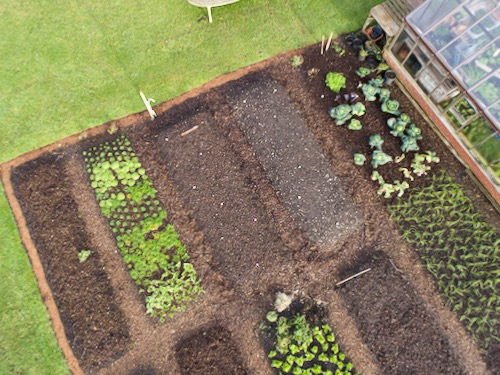
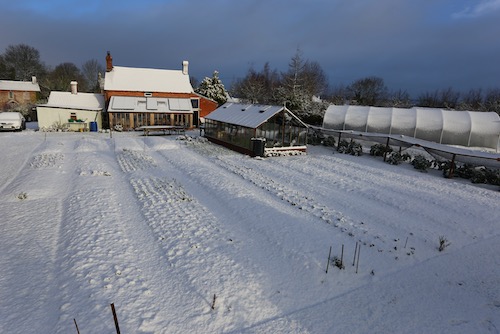
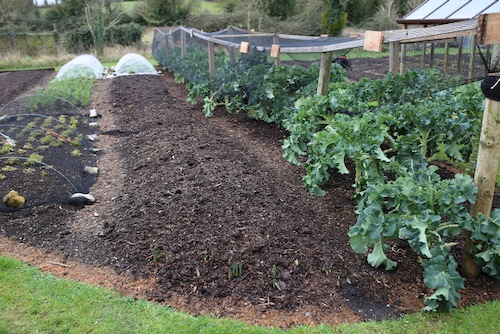
Jenny’s pasture
I am so happy she agreed to sell this almost acre of rough pasture, which her yard manager calls a poor field! So it may be for horses but it looks nice soil to me, we dug a little hole and found plenty of worms, and lots of bind weed roots too! I expect slugs and leatherjackets at the beginning.
I have no precise plans except to see what happens as we make new beds, perhaps have a pond dug. I am not rushing to plant trees because there are deer and rabbits. Over the years I have lost a lot of trees from planting before I was ready to protect them, alsoI want to mulch new trees thoroughly against weeds.
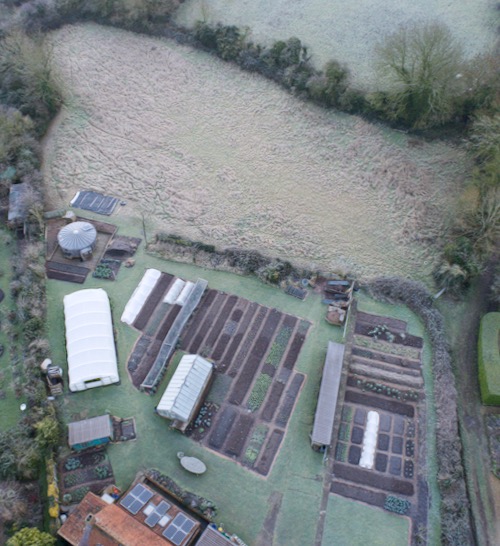
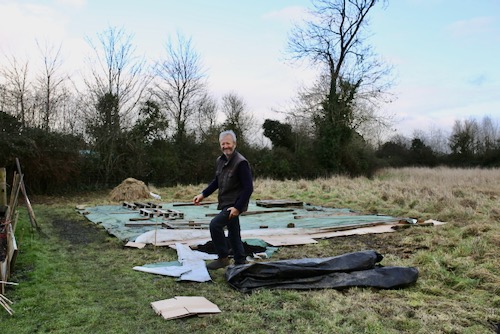
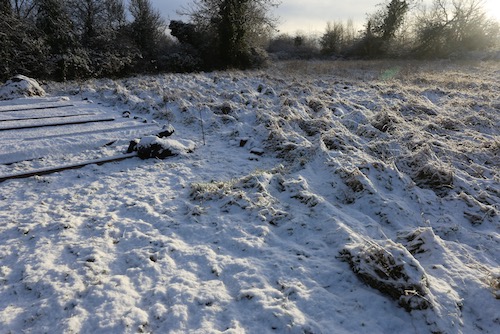
Compost, how much?
For my existing garden I have plenty of compost. That now changes with the new land, for which I need extra compost. It’s the difference between year one, starting out, and ongoing. Or you can use polythene with very little compost, and with probably lower harvest amounts, more weeds too. There are no rules with no dig (except no dig!), just a lot of possibilities, learn more in my book, on offer with the Calendar of sowing dates.
On existing beds we spread 2.5cm / 1in each year for two crops often. No feeds or fertilisers, few weeds, few slugs. soil life fed and protected, many harvests and minimal bed preparation between them.
For new beds, I shall spread about 10cm / 4in to make the new beds. Hope to find enough cardboard, and also we are using polythene / tarp. I bought some Revive green waste compost made by Viridor, from Wallee Watson 07989 580872, at £50 per ton delivered. Shall use others too. I explain the process in this You Tube video, although this time it’s less compost and some use of plastic to kill weeds.
- If you start no dig with few weeds, you don’t need to use cardboard.
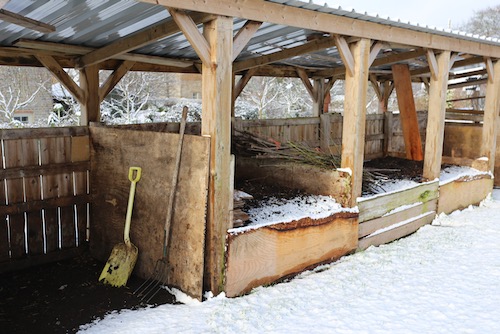
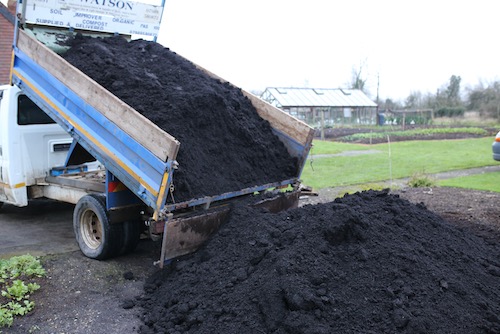
Broad beans sown November
They look worse for winter, but also are ok. They always amaze me with their resilience, and a lot of the good work is happening out of sight, as the roots establish all winter in any mild weather.
No dig really helps with this because the soil structure is intact, drainage is good.
Broad beans are a great vegetable to overwinter because they finish cropping in early summer, allowing many possibilities for new plantings. Have transplants ready: in module 2 of my second online course, I explain all about planning and succession. You can buy it as a module, for £30.

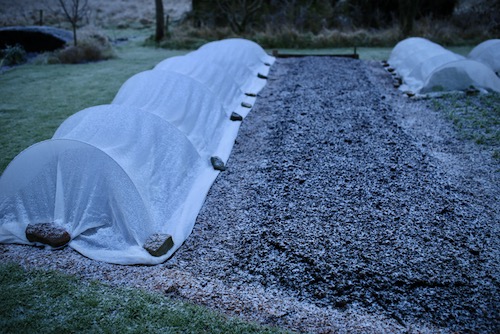
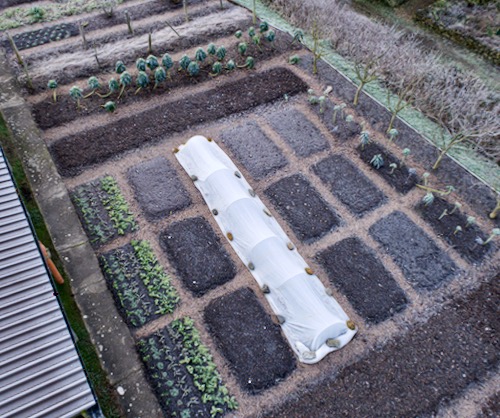
Weedkiller in compost
All is not good on this front because already I have heard from Anna, a gardener in the Wirral (hers is the first listed comment) who has suffered poisoning from both Wickes and Westland’s compost. It’s such an issue because most of the compost you buy will be fine, but clearly some of it is not, and we cannot know. Plus the authorities are not interested or able to help, whatever they may claim.
Once you have some compost you can sow beans in it to check for healthy growth hopefully, see my videos about pyralid in compost. We have sown beans in my newly delivered compost, but we shall be spreading it before I know for sure, am reasonably confident.
I have been trialling digestates also, from methane digesters. So far I am not hugely impressed because their microbial quality must be extremely low, after the anaerobic process. Growth initially is poor, however after keeping the product here in a sack for six months, brandling/re/tiger worms arrived and the broad beans look pretty healthy, compared those in some fresh digestate.
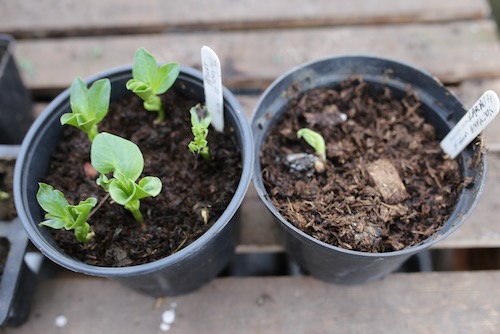


Woodchip, is clean!
Do look out for deliveries of woodchip from anyone trying to get rid of it.
- Don’t worry if it has conifer material, because pH is very difficult to change, whatever others may claim.
- No worries about honey fungus either. I am still checking this one but there is a lot of myth and misconception. It ‘s not so terrible after all, certainly not a cause to dig out your whole garden!
- Best not use fresh woodchip as mulch for beds you plant into. It’s better when say 6-9 months old as a brown ingredient for compost making, and as a thin layer on paths.
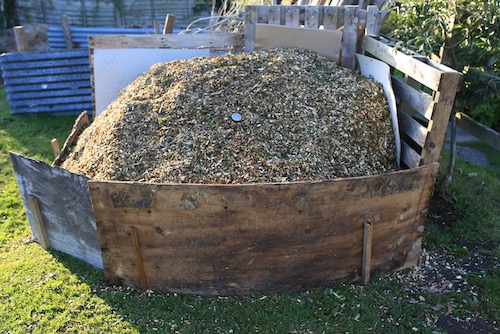
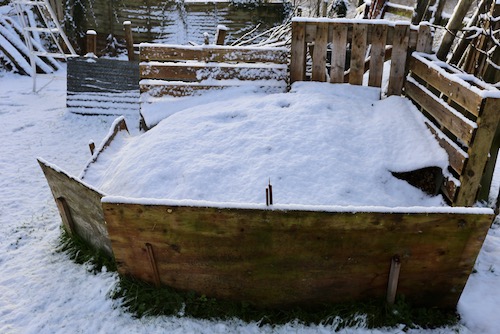
Something different
Thanks to his nice comment on one of my YouTube videos, I am in contact with William DeMille of high desert land in Nevada, where his family run cattle on a 16,000 acre ranch. William has a fascination for using the excess winter sunshine, and converting it to food. The latitude is 39°, equivalent to Madrid in Spain. Where they also had snow recently!
William calls the structure a walipini, and it includes those amazing boulders on the north wall, to store heat from daytime sun. For an Englishman like me, the scale of it looks so American! Such as that very ‘minuscule’ door, ten feet high!
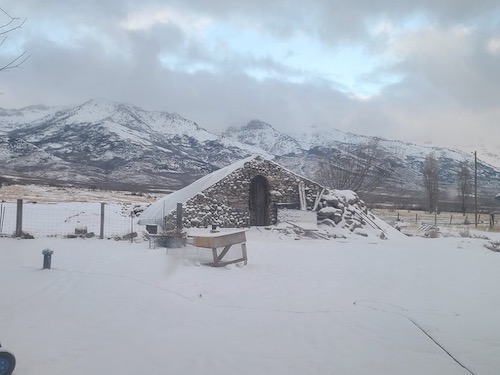

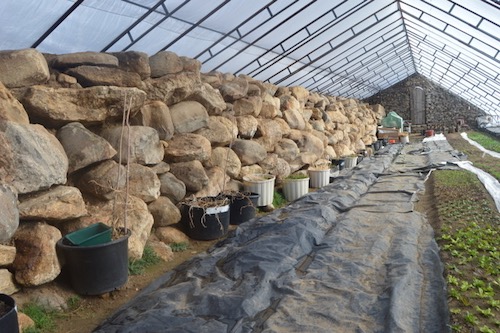
My polytunnel
Salad growth under cover has been slower this winter than for several years. We have had several nights of -5 C 23 F which freezes the plants even undercover. This does not kill them but slows any new growth. It can also damage some stems of the mustard and make them a little mushy.
For this reason and because I have been so busy writing, I decided to leave the plants to grow slowly, no picking and without any watering at all since 21st December. The doors are open all of the time and I am happy to say there is little fungal damage. Mildew can be a problem in winter because our climate is so cloudy and damp. Our sunshine total for January is 46 hours, just 1.5 hours every day.
We have had 12 frosts, night temperatures average 2 C 36 F, day temperatures average 6.5 C 44 F. Rainfall this January is just over 90mm/3.6in. You can see Homeacres weather any time, right here!
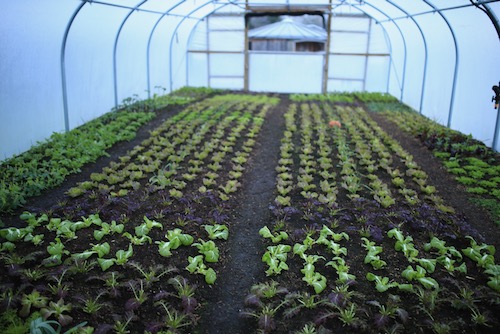
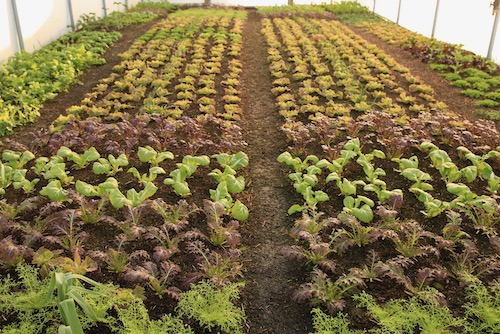
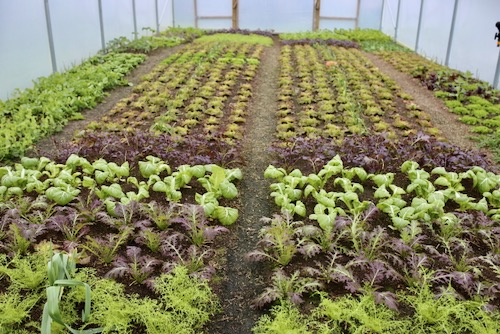
Propagation
It is still best to hold off sowing seeds, unless you feel like extra work in looking after them for longer. It is possible to sow aubergines and chilies now for example, but I am not convinced how much you gain from sowing now compared to in say three or four weeks time.
The photos show I have a few plants in the greenhouse from sowings last autumn.
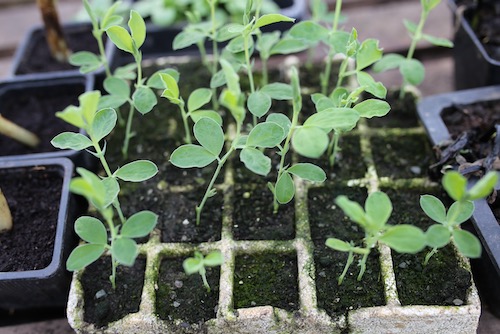
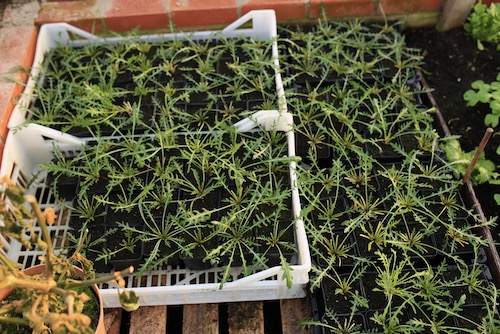
So much to learn
Growing food on this scale, all hand work, has the wonderful aspect of continual contact with nature, and receiving her feedback. I feel privileged to do this and even more to be able to share it, and love the feedback from around the world. A man in Cuba for example was expressing joy at the large harvests from his lettuce, thanks to my method of removing larger leaves regularly rather than cutting.
You amazing work, I put the test of only cutting only the largest leaves of lettuce and it has given incredible results. Thanks from my heart. Greetings from Cuba, Freddy Araujo
One simple thing making a significant difference. Also I see many lovely comments of how gardening is helping people deal with the awful pandemic and all the issues surrounding it.
If you want to delve (dig! – words are so strange) deeply into how no dig works, how to practice it and then how to develop all your gardening skills, my online course package will certainly take you there.
The photo shows Leslie from Puerto Natales in Patagonia who took both courses, and has been enjoying success in a difficult, very windy climate. I have a large following in Patagonia and that is a remarkable thing about the internet, it gives worldwide reach. Turns out there is a lot of worldwide interest!
Also we have divided the courses into module packages which you can buy separately, to learn particular aspects of gardening. For example this one, module three of course one which is about bed layout and pathways.
I receive many questions about how to set up beds on sloping ground, and the answer is pretty simple, to run beds up and down, not across unless your slope is more than about 10°. I know this well from experience this is not a theoretical statement. Everything I teach is rooted in experience.
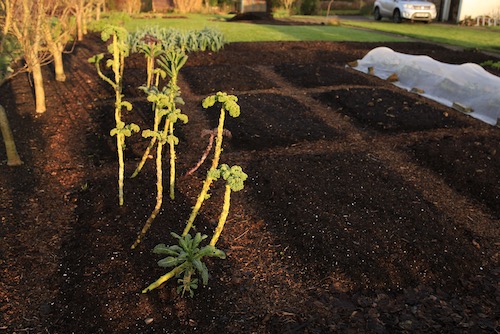
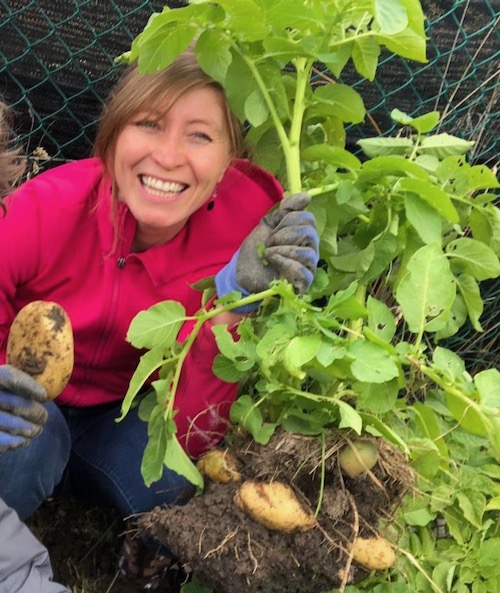
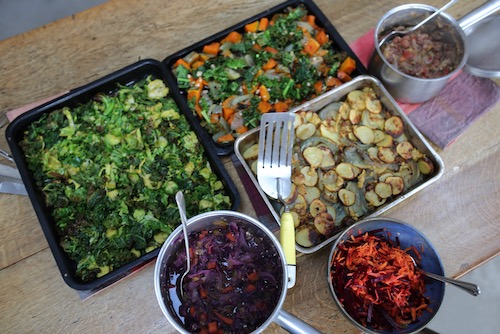
Winter garden
Edward and I filmed a video in early January on a frosty morning, all about what you can harvest fresh from the garden in mid winter, in our temperate climate. I do find it amazing how you see plants frozen or covered in snow, and then later when the ice has gone they look fine!
Clearly it depends on growing the right plants for this season, and my video should help you understand this, as will my new course three, and do remind yourself of sowing dates if you need that. Keep remembering in spring that there is no rush to sow, because later sowings often catch up.
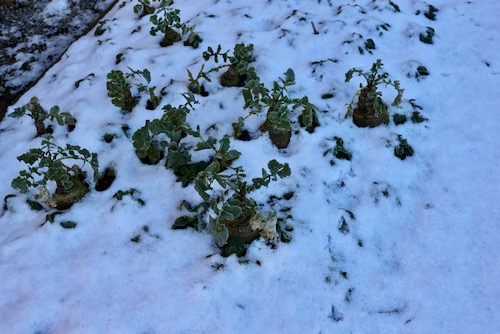
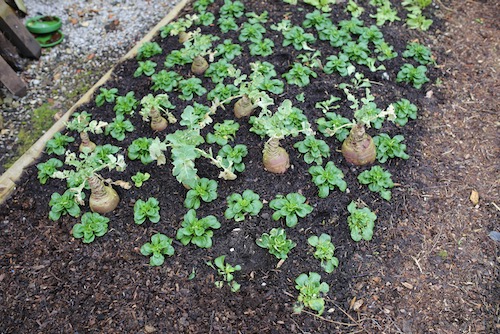
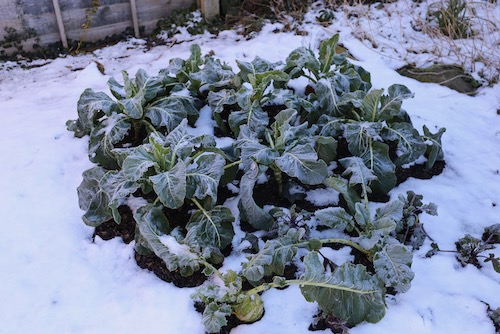
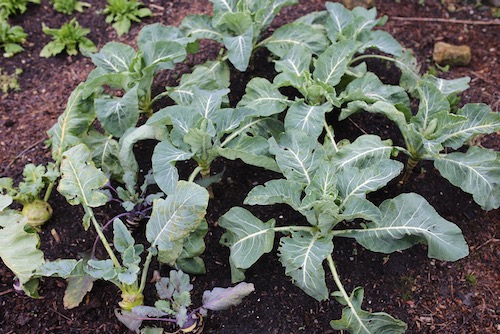
Winter staples
And to finish, these are vegetables I would not be without in winter. The Brussels take a long time to grow and do not give a huge amount of food per area, but if you like them they are so worthwhile for cropping regularly, through weather when not much other fresh green is available. These were transplanted among carrots in June.
I sowed the parsnips direct in March, and multisowed the onions in late February… soon!
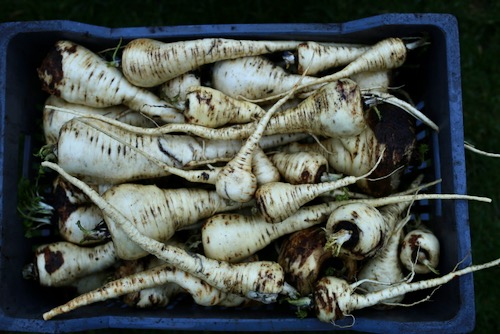
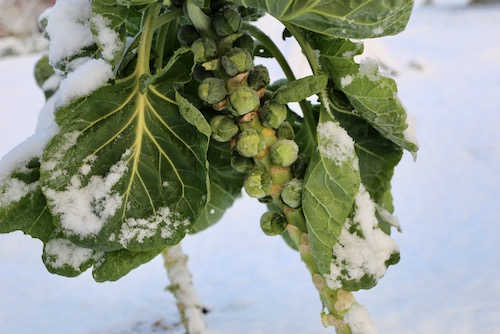
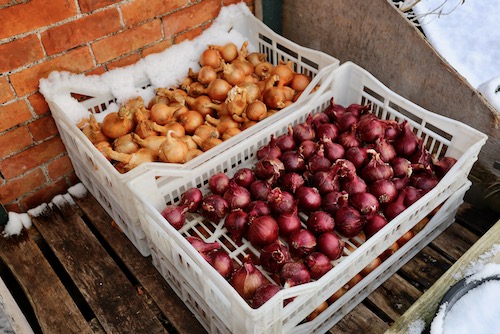









































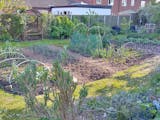
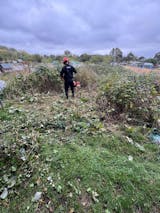
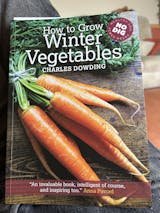
0 comments